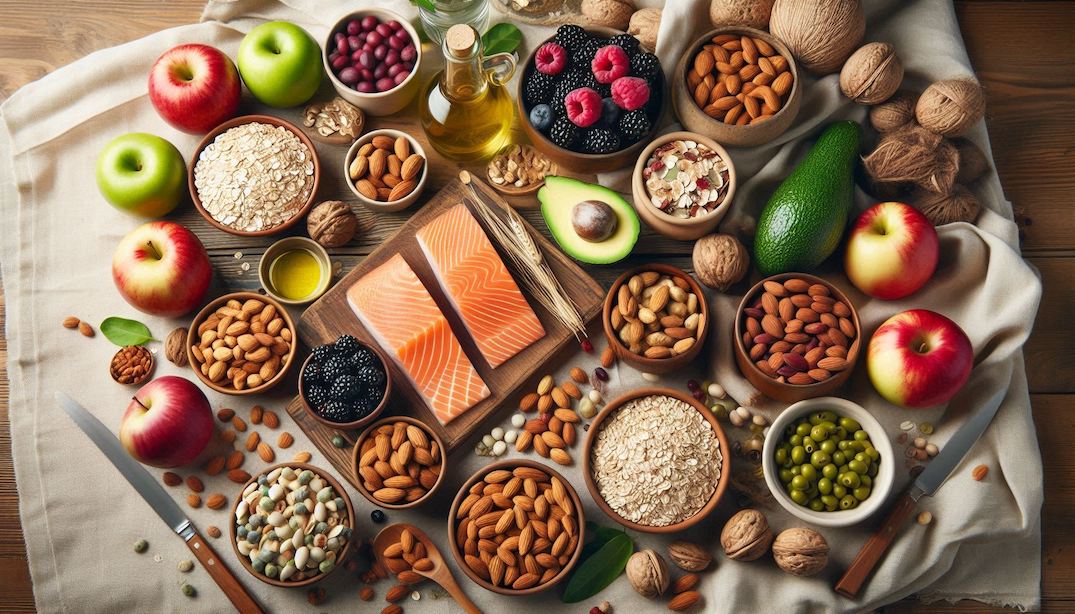
Cholesterol is a waxy substance found in your blood, necessary for building healthy cells. However, high levels of cholesterol can increase the risk of heart disease. Cholesterol comes in two forms:
- Low-Density Lipoprotein (LDL): Often referred to as “bad” cholesterol, as it can accumulate on the walls of arteries, forming plaques that lead to narrowing or blockages.
- High-Density Lipoprotein (HDL): Known as “good” cholesterol because it helps remove excess cholesterol from the bloodstream and return it to the liver.
How Does Cholesterol Pose a Health Risk?
Excessive LDL cholesterol can cause fatty deposits in the blood vessels, restricting blood flow and potentially leading to heart attack or stroke. HDL helps counteract this by carrying cholesterol back to the liver for removal from the body. When cholesterol levels are imbalanced, especially with high LDL and low HDL, the risk of cardiovascular diseases (CVD), such as coronary artery disease and stroke, increases.
Age Groups with the Highest Cholesterol Risk
While cholesterol can affect people of all ages, those in their 40s and older tend to have a higher risk due to several factors, including:
- Slower metabolism
- Changes in lifestyle habits, such as reduced physical activity
- Natural decline in hormones like estrogen (in women) and testosterone (in men) that help regulate cholesterol levels
Men over 45 and women over 55 have the highest risk, especially those with a family history of heart disease, high blood pressure, or diabetes.
Top 10 Foods and Fruits to Help Lower Cholesterol
- Oats: Rich in soluble fiber, which reduces LDL levels by absorbing cholesterol in the digestive tract.
- Barley and Whole Grains: Another good source of fiber that can help lower cholesterol.
- Nuts (Almonds, Walnuts): High in monounsaturated fats that can lower LDL and raise HDL.
- Avocados: Contain heart-healthy fats and fiber, which lower LDL and raise HDL.
- Fatty Fish (Salmon, Mackerel): Rich in omega-3 fatty acids that help reduce LDL and triglycerides.
- Olive Oil: Packed with antioxidants and healthy fats, which can lower LDL.
- Beans and Legumes: High in fiber, which slows cholesterol absorption.
- Berries (Blueberries, Strawberries): Rich in antioxidants, which can lower LDL.
- Apples: Contain pectin, a type of fiber that helps reduce cholesterol levels.
- Spinach and Leafy Greens: High in lutein and fiber, beneficial in lowering LDL.
Top 5 Foods to Avoid for People with High Cholesterol
- Red Meat (Beef, Lamb): High in saturated fats, which can raise LDL cholesterol.
- Full-Fat Dairy (Butter, Cream, Whole Milk): Contains high amounts of saturated fats that increase cholesterol levels.
- Fried Foods: Often cooked in unhealthy oils, leading to increased LDL cholesterol and triglycerides.
- Processed Meats (Bacon, Sausages): High in saturated fats and sodium, which are both risk factors for cholesterol issues.
- Baked Goods (Pastries, Doughnuts): Often contain trans fats and refined sugars, which negatively impact cholesterol levels.
-Lê Nguyễn Thanh Phương-
Sources for Further Reading
- American Heart Association: https://www.heart.org/
- Mayo Clinic: https://www.mayoclinic.org/
- National Cholesterol Education Program: https://www.nhlbi.nih.gov/health-topics/cholesterol
These resources provide in-depth information on cholesterol management and dietary guidelines to lower the risk of heart disease.
